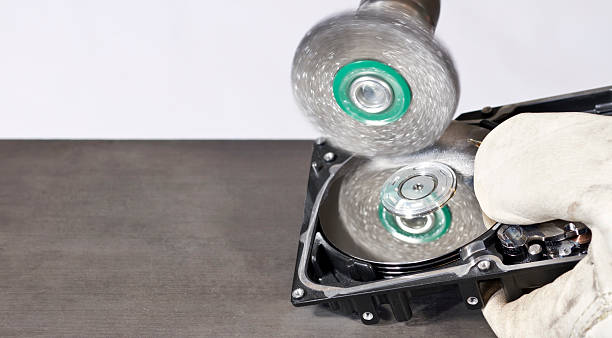In the digital era, hard drives contain vast portions of our personal and sensitive data; ensuring that this can be securely erased when it is no longer needed is critical. This involves more than just deletion, making restoring data impossible; it is called hard disk scrubbing. This blog will brief you about hard disk scrubbing, its purpose, methods, and best practices to follow.
What is Hard Disk Scrubbing?
Hard drive cleaning means that you permanently delete your data from a hard disk drive (HDD) so it is not recoverable with any method. Unlike conventional deletion, which simply removes the reference to a file from the file system, data is left as such in physical media until it gets overwritten. Hard disk scrubbing, however, actively overwrites this data multiple times with random patterns or zeros and ones to ensure complete erasure. This process makes data recovery virtually impossible, providing a higher level of security for sensitive information.
Why is Hard Disk Scrubbing Important?
- Data Security and Privacy: It is important that no sensitive data can be retrieved, especially when you throw away or use a hard disk scrubber for different purposes. This is vitally important to enterprises that deal with customer information, financial records, or intellectual property. Improper scrubbing can expose sensitive information, which could result in a data breach or legal trouble.
- Compliance with Regulations: Different industries have regulations that require data disposal. In the healthcare industry, entities like HIPAA require organizations to sanitize data so as not to compromise privacy, and in Europe, GDPR governs how businesses erase personal data. We can prevent violations of these rules and regulations by erasing data from the hard drive.
- Preventing Data Theft: Cybercriminals frequently sift through abandoned or used hard drives to retrieve valuable information. Scrubbing your hard drive thoroughly rules out the chances of data theft, which could easily be used against you to exploit your personal information or that of a corporate level.
Methods of Hard Disk Scrubbing
Several methods are available for hard disk scrubbing, each with varying security and efficiency. The most commonly used techniques include:
- Single Overwrite: Just as it sounds, this method writes zeros or ones once over the entire disk length, which covers the previously stored data. However, speed bumps in the erasure process made it less secure than other solutions due to advanced recovery methods that could capture some information.
- Multiple Overwrites: In this approach, the data on the disk is overwritten at least once, but more commonly multiple times, with random data. Typically, 3–7 passes are required, which is the most usual standard.
- Random Data Overwrite: This method overwrites the hard disk with random data. It works very well because the random patterns make it nearly impossible for recovery tools to reconstruct any original data.
- Cryptographic Erase: This method securely erases the encryption keys used to encrypt data. Without the keys, this encrypted data is useless and no longer recoverable.
- Secure Erase Commands: Some modern hard drives include built-in secure erase commands Veracyprpt can issue through its interface. These commands are used for a safe and thorough data wipe.
Best Practices for Hard Disk Scrubbing
To ensure that your hard disk scrubbing process is effective, consider the following best practices:
- Choose the Right Method: Based on your requirements, choose a method of scrubbing. If you are looking to use an erase program for your own personal needs, then a single or multi-pass overwrite may be enough; however, companies that deal with critical information should consider more advanced erasure methods, such as cryptographic here and secure erase commands.
- Use Trusted Software: Many hard drive scrubbing tools are available through software applications. Use well-reviewed, standards-compliant software from all trusted sources.
- Consider Physical Destruction: For the absolute most secure level of security (installed with susceptible data), physically destroy the hard drive after scrubbing. This can include shredding and degaussing with a powerful magnet to disrupt the magnet.
- Verify the Scrub: You need to verify that data has been erased after the scrub process. However, while scrubbing, some tools have verification processes to check for any remaining data.
- Document the Process: If you are erasing many hard drives as part of an operation, document every step, from what system was used to how it was done, when, and who was involved.
- Educate Your Team: Ensure that anyone who handles or manages erasing and reusing hard drives is aware of the proper protocols for erasing these devices.
Conclusion
In data security, hard disk scrubbing is critical to ensuring that sensitive information does not end up in the wrong places. Suppose you appreciate the significance of this process and make your selection correctly, in addition to knowing a few things about implementation details backed by best practices. In that case, you may be protected with good exposure from unauthorized access. Hard disk scrubbing means your data is gone for good.


